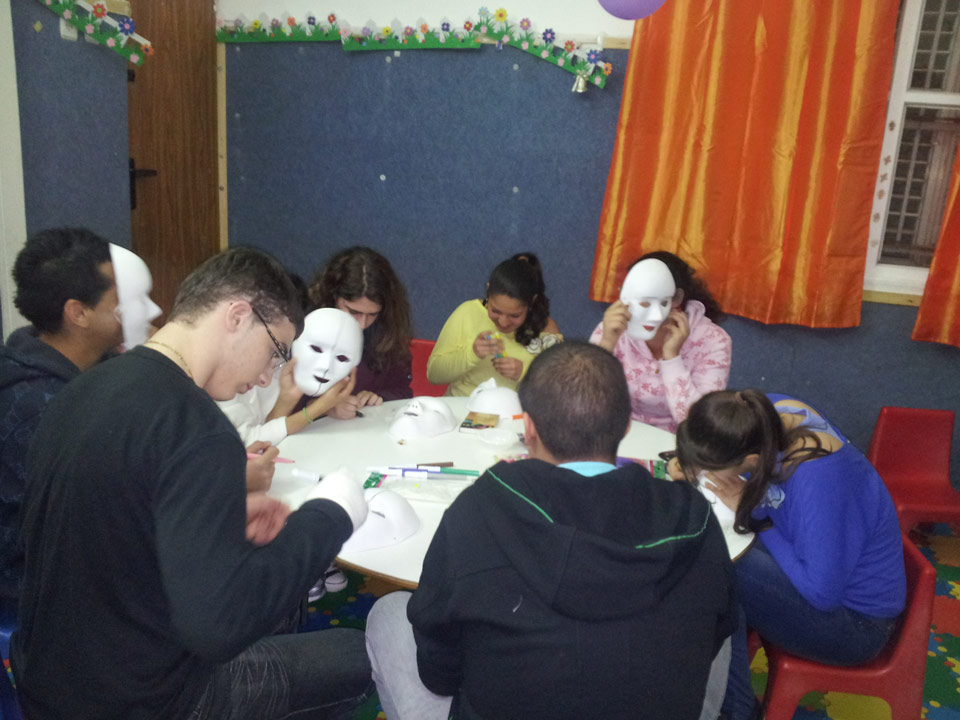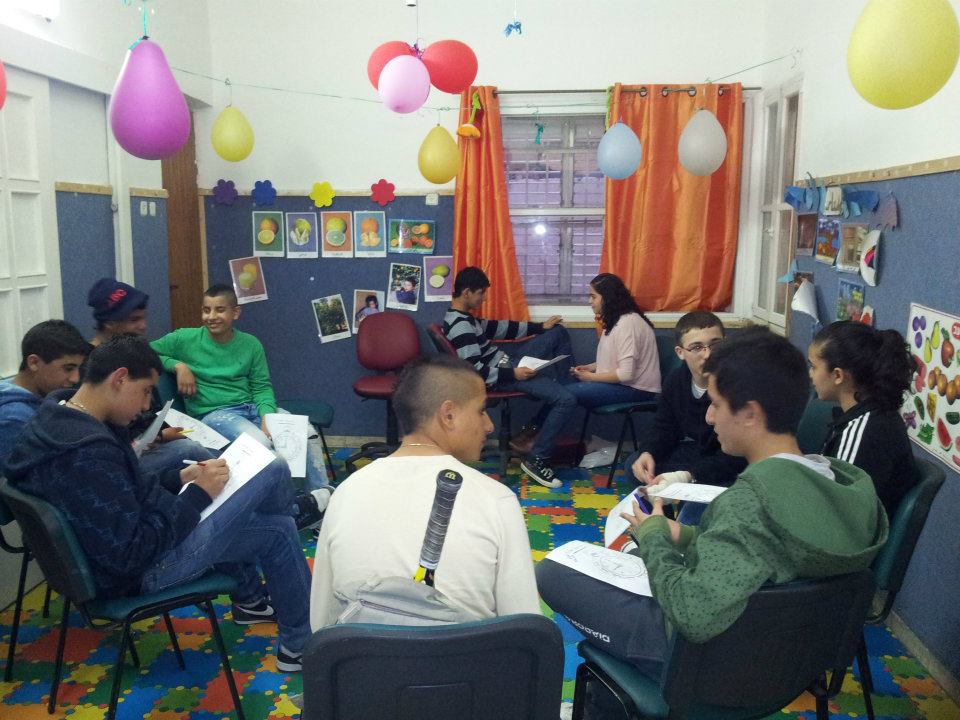Young Leaders Training Course
The greater Ramle environs have a very heterogeneous makeup in which different communities (religious, secular, Ethiopian, Russian, Muslim Arabs, Christian Arabs) live parallel lives but rarely meet and interact. The level of dialogue, if at all, is superficial and occasional.
Open House sees itself as a neutral location where fruitful dialogue and shared community, based on understanding and acceptance, can truly exist.
The Young Leadership Program brings together Arab and Jewish youth, ages 15-19, from Ramle and neighboring communities, for a wide variety of shared activities, leadership training, and community projects.


Goals
- To enable Jewish and Arab youth in the Ramle area to meet.
- To train the participants as counselors and community leaders in order to create, develop and lead social projects in the Open House and Ramle environs.
- To increase the youths’ awareness of and involvement in the social world and community around them.
14 participants – 10 Arabs and 4 Jews; 5 boys and 9 girls; 2 Muslims, 8 Christians, and 4 Jews – met weekly during 2013 for 15 two-hour sessions (with interruptions for the holidays of each of the religions). The youth interaction was planned gradually – In the first stage, getting to know one another, discovering their shared interests and concerns, engaging in creative activities such as theater, art and group games.
In the second stage the youth were given tasks to complete in mixed groups on social or political subjects, with clear instructions to seriously consider and relate to the issues such as racism, stereotypes, national identity and primary concepts of each religion.
In the third stage the youth were taught the skills for counseling and group work, which they utilized as volunteer counselors during the summer in the Open House Peace Camp. They were involved in the planning and implementation of the Camp’s activities and, during the year, volunteered to implement Open House celebrations.
Meeting One: The meeting focused on becoming acquainted, discussing what each participant’s expectations from the course were, and why they decided to attend the program. They answered that they would very much like to get to know youth their age and to meet “the other side.” They expressed fear that they might misunderstand one another, that they wouldn’t have an opportunity to speak. They wanted to learn about themselves and others.
Meeting Two: Discussion around what they have in common – family, studies, music, leisure – as an introduction to their different cultures.
Meetings Three and Four: Dilemmas facing teenagers – most commonly school, parents, family, friends. They were given dilemmas and were requested to act out the characters in the situation and come up with a solution – however, they refused the drama part of the exercise.
Meetings Four and Five: Took place during the national election in Israel. The participants were divided into small groups, asked to choose a social issue important to them, and create an election campaign. Examples used were the environment, equality in Israel, borders, the importance of the state.
Meeting Six: Stereotypes. Participants were given names – male, female, Jew, Arab – and they had to create a character and describe him/her, where s/he works, career, education. We showed them how easy it was to label and “box” someone just on the basis of his/her name – Ashkenazi, Sephardi, Jew or Arab, male or female. The youth were shocked to discover how easy it is to stereotype, especially when they heard the description of the real people behind those names.
Meeting Seven: Discrimination of Jews and Arabs in the state of Israel with a focus on the legal system.
Meeting Eight: Tour of the Old City of Ramle that included a visit with a local, well known artist, Nihad Dabit. This tour was a historical eye opener, especially for the youth who do not live in Ramle. The history of Ramle’s Arab population, before and after the war in 1948, was discussed, as was the current neglect of the Old City, together with recognition of its potential. The Jewish and Arab participants said that this was their first visit to this neighborhood, even though it is across the street from the Ramle market and their schools.
Meetings Nine, Ten and Eleven: Project building skills. The participants organized a spring evening event between Passover and Easter for the children in the Summer Camp.
Meetings Twelve and Thirteen: These sessions were devoted to learning the skills they needed for implementing youth programs, especially the Summer Camp, at which they volunteered in the summer very successfully.
Meeting Fourteen: Second trip — to Emmaus Nikopolis Monastery where they entered the church and attended a prayer service together with the “Bnei HaOsher” group that lives and runs the monastery. They toured the premises and archeology and the monks and sisters taught them about the life of the community.
The participants were devoted to the program and came to all the sessions regularly. They were boisterous and the staff was challenged to keep a neutral attitude, given the uneven cultural balance of the youth.
The final meeting was held at “Open Space” in Kfar Shmuel, a therapeutic horse riding center for special needs children and youth at risk.
This program is being evaluated professionally for the Fetzer Institute and the translation will be submitted at the end of January.

 Summer Camp 2024
Summer Camp 2024 Summer Camp 2023
Summer Camp 2023 Summer Camp 2022
Summer Camp 2022 Summer Camp 2021
Summer Camp 2021